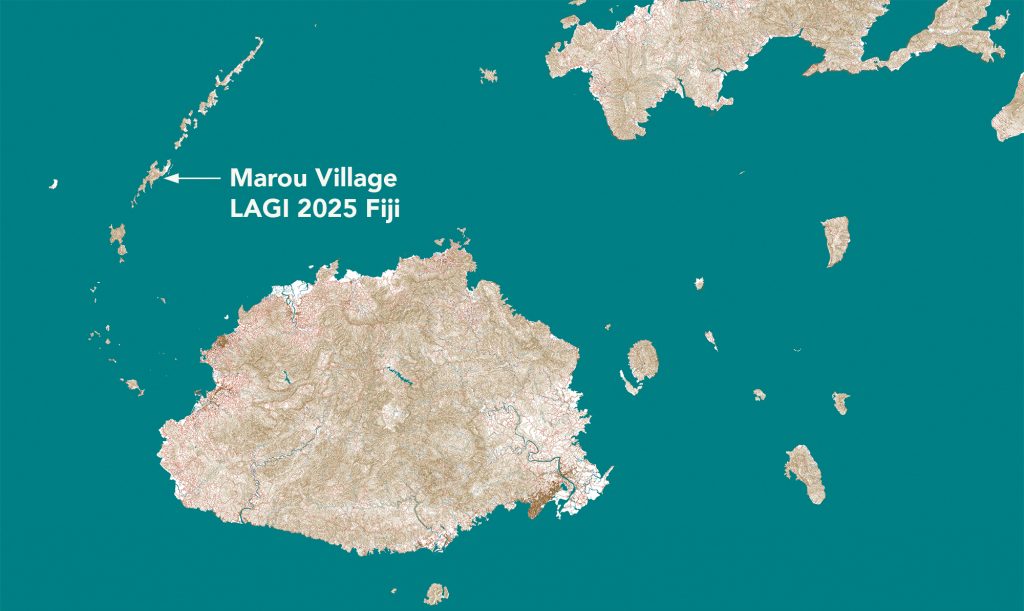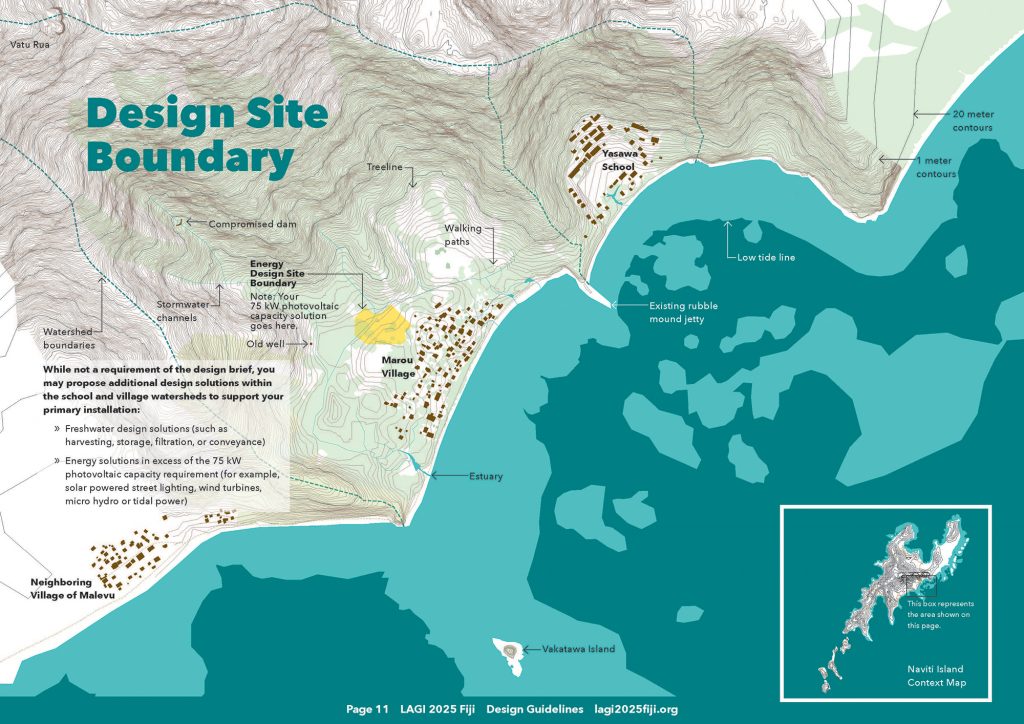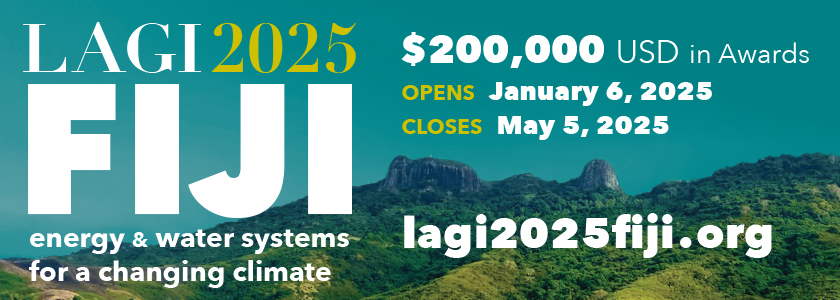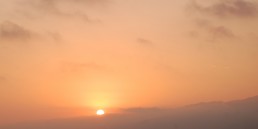The Challenge
The residents of Marou Village and the Land Art Generator Initiative (LAGI) invite creative minds worldwide to shape the future of clean energy and water for island coastal communities. LAGI 20925 Fiji merges art, sustainability, and community empowerment, offering $200,000 in awards.
Participants are invited to design a permanent landmark piece of art in the landscape that not only captivates but also provides clean energy and reliable drinking water to Marou Village. Situated on the southeast coast of Naviti Island in the Yasawa Group, the village is home to 67 households. The project aims to ensure a sustainable energy future for this coastal community while supporting tourism and showcasing harmonious coexistence with nature.
The detailed design brief is live and submissions are due by May 5, 2025. LAGI 2025 Fiji is free to enter and open to all.
Visit lagi2025fiji.org to Learn More and Download the Design Guidelines.
Awards
Two winning teams will each be provided with $100,000 USD to advance their design proposal and build a functioning prototype of their idea in Fiji.
A book published by Hirmer Verlag, exhibitions held in partnership with the Fiji Arts Council, and a program of community engagement events will communicate the innovative outcomes throughout Fiji and around the world, inspiring the public about the beauty and wealth of possibilities of a world beyond carbon while demonstrating creative adaptations to a rapidly shifting climate.

The Urgency
Having contributed insignificantly to global greenhouse gas emissions, island nations such as Fiji nevertheless find themselves today on the front lines of climate change. While access to the sun’s energy in Fiji is strong, the implementation of solar power generation presents significant challenges, including aesthetics and land use.
For a nation where land is a precious (and vanishing) resource, practical design solutions for renewable energy installations that share land with other uses such as cultural destinations, farms, public spaces, and habitats can be designed to increase the potential for a 100% renewable island economy. These new energy system designs can also consider how their aesthetic manifestation can support and enhance the beautiful landscapes that bring millions of people to visit each year from around the world.
While electricity is a pressing need in Marou Village, also of critical importance is ensuring reliable access to freshwater. As global temperatures rise there is increasing variability and volatility in precipitation patterns. Rainy seasons bring severe flooding while dry seasons are even drier. LAGI 2025 Fiji is therefore seeking innovative solutions that can integrate regenerative energy and water systems.

Design Site and Supplementary Materials
In collaboration with our project partners—The University of Fiji, Arizona State University, and the Fiji Arts Council—we have provided a suite of supplementary materials that are intended to provide you with everything you will need to arrive at the most creative and practical design solution to meet the needs of the village and Fiji’s national 21st century development goals.
We have put together a new Field Guide to Regenerative Water Technologies, a companion to our Field Guide to Renewable Energy Technologies.
Selection Process
The LAGI 2025 Fiji jury is an expert panel from the Pacific Islands, Fiji, and Marou Village, along with global leaders, whose disciplines encompass community energy, policy, art, culture, climate science, adaptation, storytelling, architecture, landscape architecture, and planning. The LAGI 2025 Fiji selection process is entirely anonymous. Winners will be selected on merit through a process that begins with technical review by a team of solar mini-grid experts and concludes with the recommendation of the jury.
- Ilisari Naqau Nasau
Sau Turaga (Chief Maker) of the Village of Marou, of the Mataqali Koro (Koro Clan), Representing Marou Village - Oliver Broughton
Energy Portfolio Management, Renewables and Efficiency, Elemental Group - Deb Guenther
Landscape Architect and Partner at Mithun, FASLA, LEED AP, SITES AP - Elena van Hove
Director, Global Energy Access, Laboratory for Energy and Power Solutions, Julie Ann Wrigley Global Futures Laboratory, Arizona State University - Fenton Lutunatabua
Storyteller and Climate Change Activist - Dr. Ramendra Prasad
Senior Lecturer, Department of Science, The University of Fiji - Jale Samuwai
Manager, Global South CFAN Program, RMI - Paula Schaafhausen
Artist - Setoki Tuiteci
Architect, Ethos Edge Design Studio; General Secretary of the Fiji Association of Architects - Residents of Marou
Local Community

Your invitation to Innovate
LAGI 2025 Fiji is more than a design competition; it’s a movement to envision and create a future where renewable energy systems empower communities and enrich the natural and social environments. Whether you’re an architect, artist, engineer, or dreamer, this is your chance to leave a lasting impact on a community and inspire global audiences.
The word lagi has a special meaning in the Pacific Islands. It means sky or universe — and when combined as vakalomalagi means heaven — evoking feelings of hope and harmony. LAGI 2025 Fiji has been co-created with Marou Village, a community on the southeast coast of Naviti Island in the Yasawa Group archipelago in the Western Ba Region of Fiji to secure a thriving future in harmony with nature.
Visit the LAGI 2025 Fiji website to learn more about the competition and how to participate. Together, let’s design a thriving, sustainable future for Marou Village and beyond.
Project Partners
- The Village of Marou
- The University of Fiji
- Arizona State University
- Fiji Arts Council
- HIRMER Verlag
Project Team
- Residents of Marou: Ilisari Naqau Nasau, Paula Nakarawa, Vesivesi Bose, Seru Lasa, Naibuka Kamayavu, Onisimo Yabakidrau, Solomoni Naqoli, Apasai Kaitoga, Samuela Nabolaniwaqa, Meciu Vuli, Viliame Tuwawa, Siliveno Tuitavua, Inia Lesu, Meli Tauvoli, Joseva Nasau, Vika Seru, Siteri Sawea, Melita Buna, Malelita Nainiata, Miriama Tuwawa Bainivalu, Rota Salio, Lanieta Mavama, Vika Tuirotuma, Timaima Cagilau Ralulu, Akanise Tipo, Lewatu Rejieli, Sera Tamudere, Aralai Vuranovo, Asilika Momoyalewa, Vasiti Talatoka, Ruci Drau, Remivani Toga, Watisoni Daku, Ilisari Vuda, and others.
- Logistics Support from Crystal Island Fiji: Ilisari Naqau Nasau, Captain Paul McCulloch, Tabua Batiniu, Sevina Namale, David Paka, and Rani Ranjini.
- Academic Support: Elena van Hove—Director, Global Energy Access Laboratory for Energy And Power Solutions, Arizona State University. Nathan Johnson—Associate Professor, The Polytechnic School and Director, Laboratory for Energy And Power Solutions, Arizona State University.
- Dr. Ramendra Prasad—Senior Lecturer, Department of Science, The University of Fiji.


